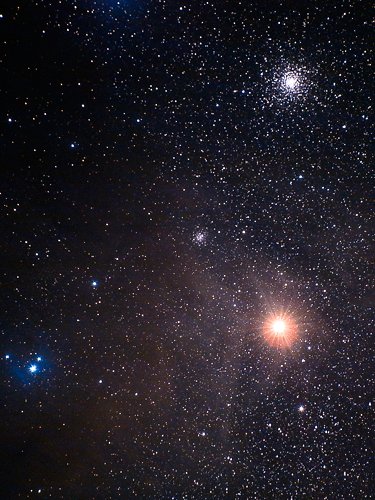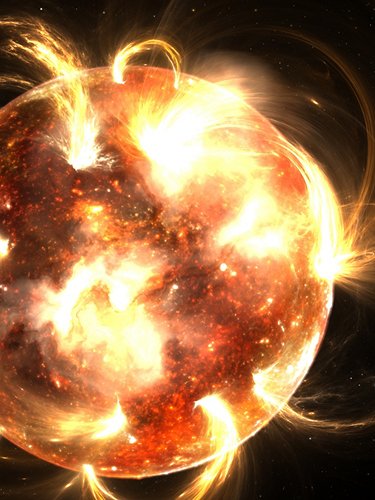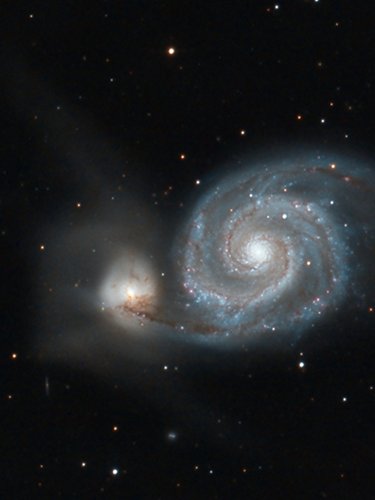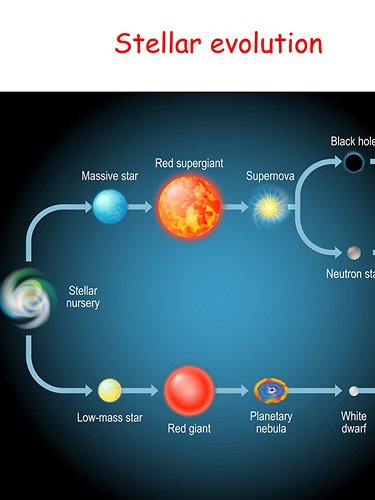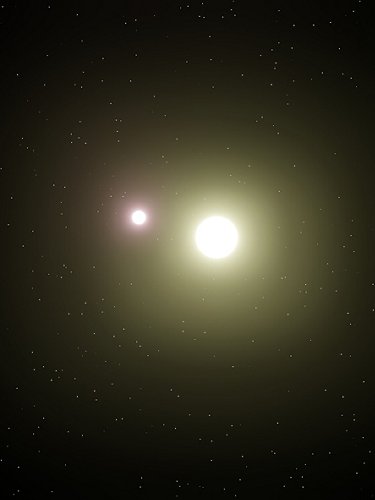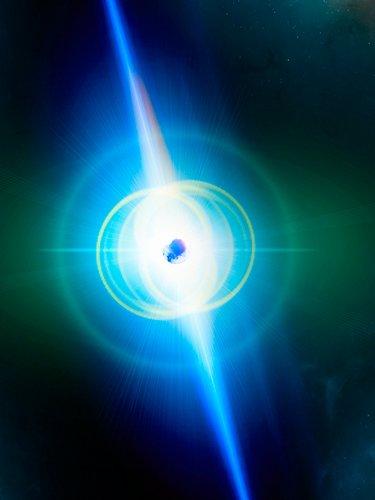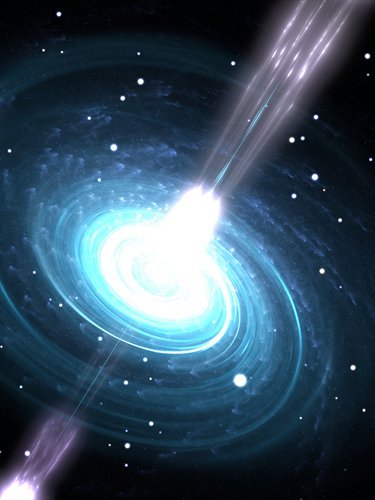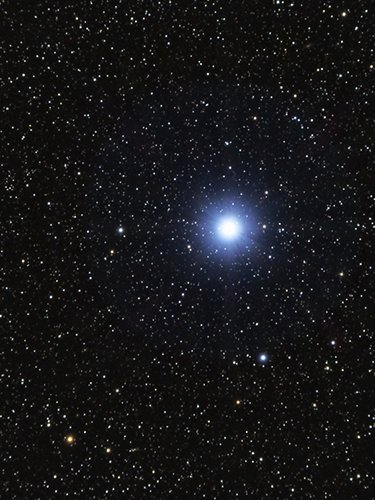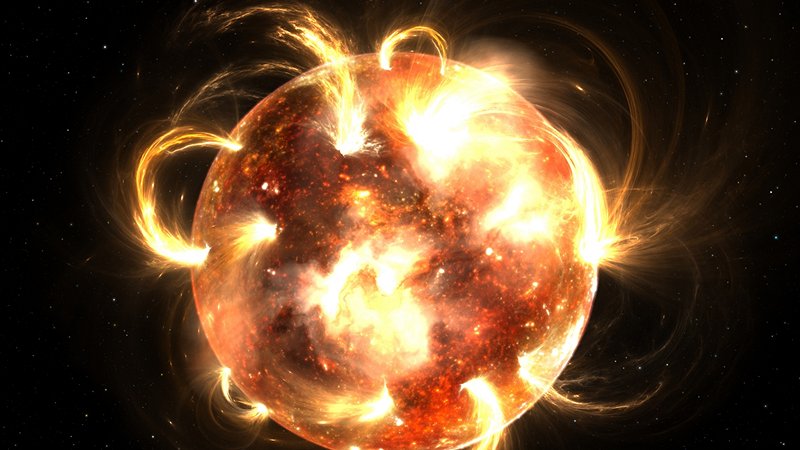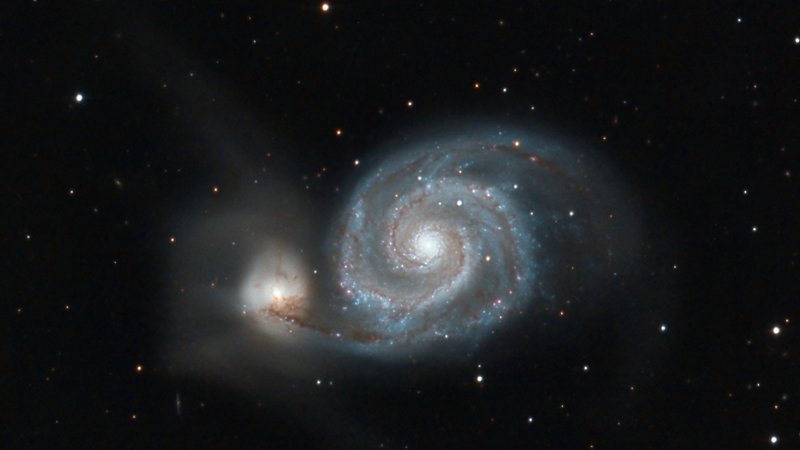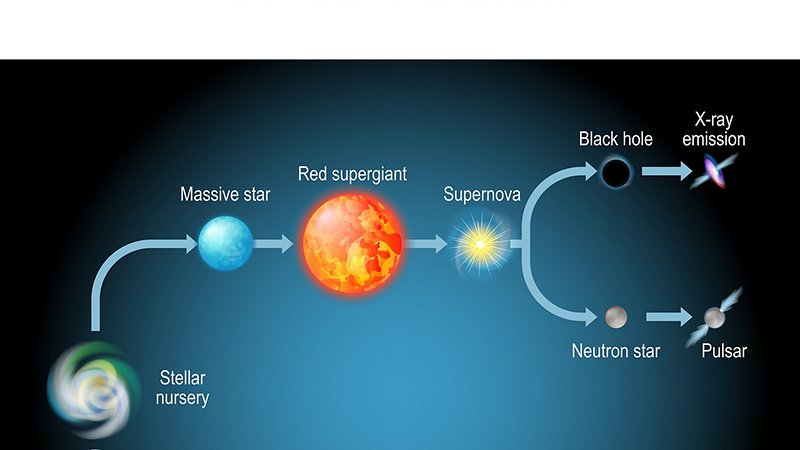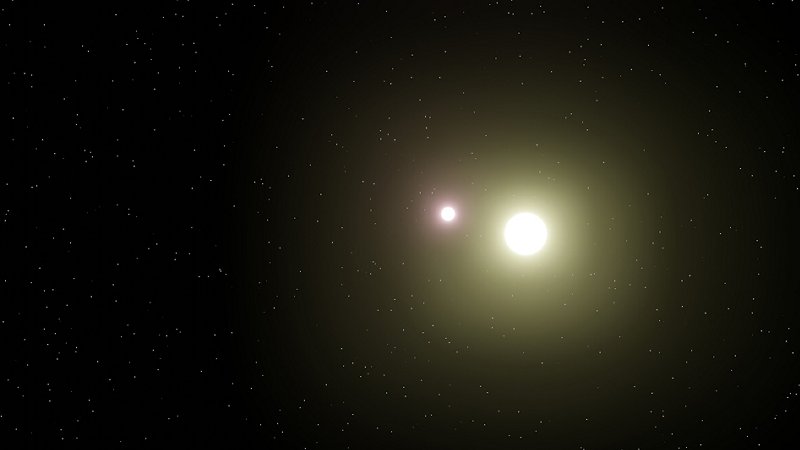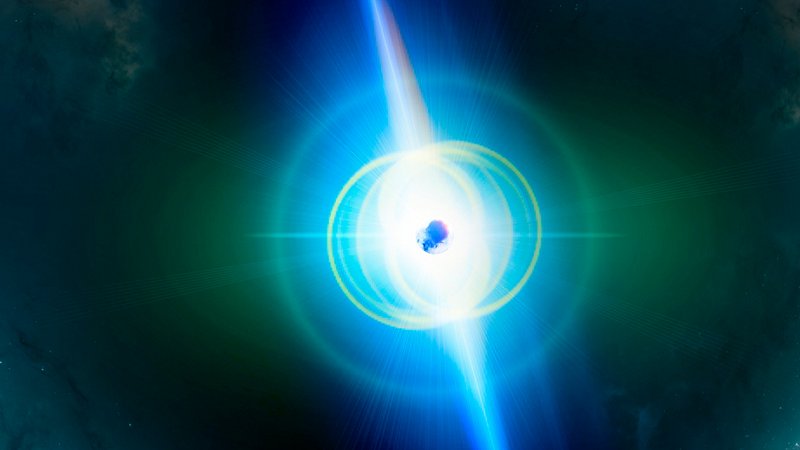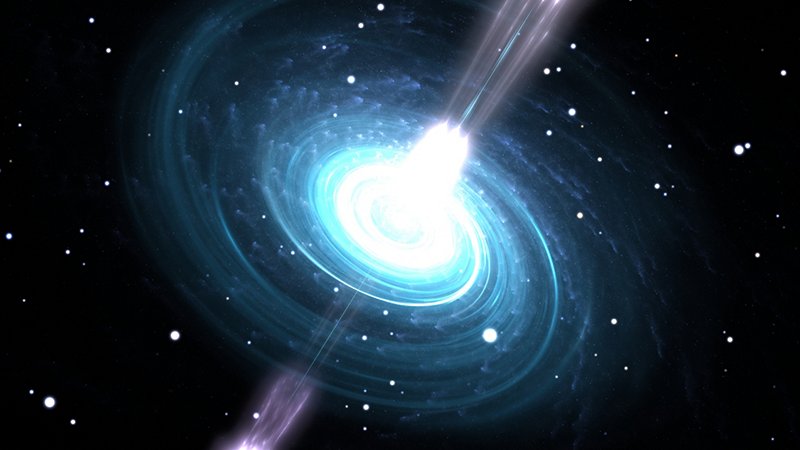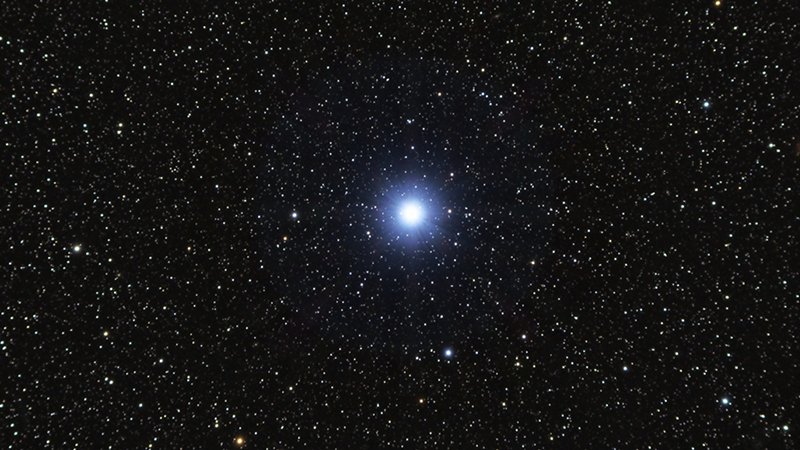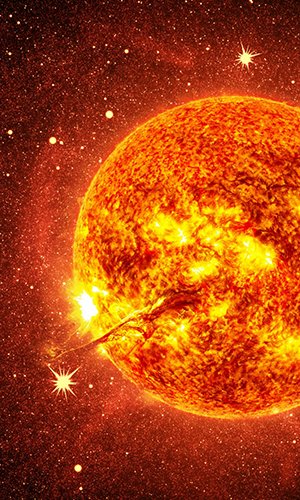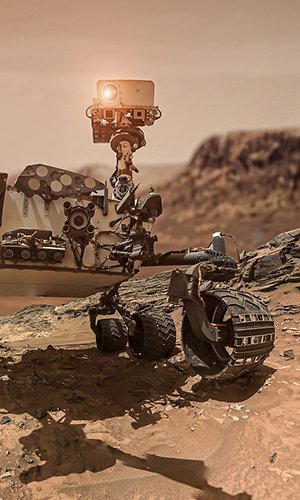Stars are born, live and die like living beings; the only difference is that they do it in such a large time frame as to appear eternal and immutable. Therefore, if we want to study their lifecycle the only thing that we can do is to assume that all stars have a similar evolutionary process and pick a vast number of samples at different stages of their life span. Rather like observing a newborn, an adult and an old person to study man’s cycle.
Why do stars evolve? All life long a star has to put up with a titanic battle between the two main forces that govern it. If some conditions are modified and one prevails over the other the balance is lost, triggering chain reactions that modify the structure of the star leading to a new balance. Therefore, the evolution of a star will go through long stable phases alternated by short periods of instability when main evolutionary changes occur. Development of a star depends above all on its mass. The greater the amount of matter , the greater the amount of pressure necessary to oppose the collapse and therefore the greater the amount of fuel burned. Consequently, larger stars are brighter than the ones with a smaller mass, but they also live much less.

